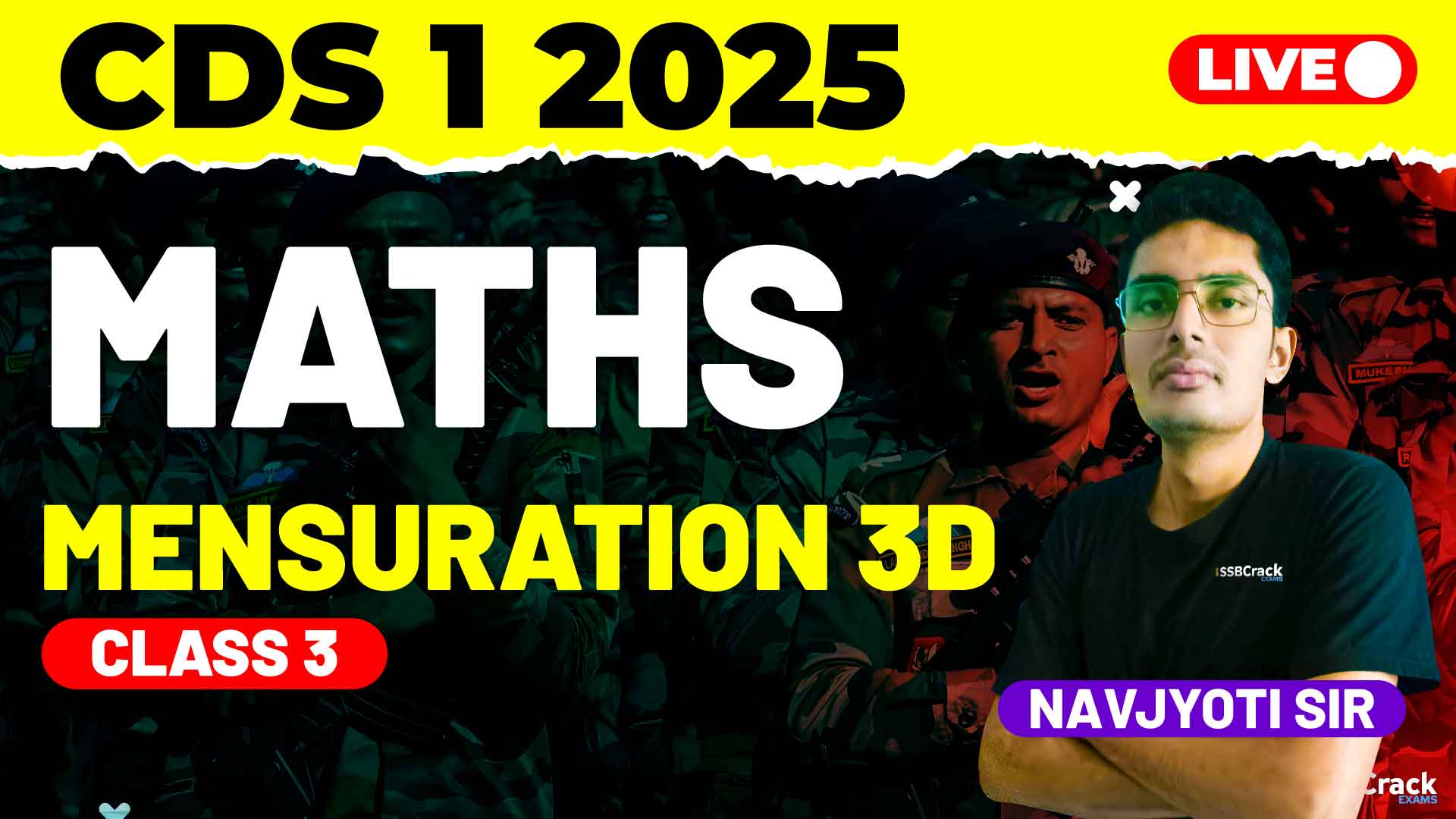Mensuration 3D is an important topic for the Maths section of the Combined Defence Services (CDS) Exam. It demands an understanding of three-dimensional shapes, their properties, and how to compute various measurements like volume, surface areas, and lateral areas. A recent class focused on advanced topics such as pyramids, tetrahedrons, and their specific characteristics, as well as practicing multiple-choice questions (MCQs) related to Mensuration 3D.
This blog provides insights into the concepts covered during the class, along with preparation strategies tailored for CDS aspirants.
Key Concepts Explored in the Class
- Pyramids
A pyramid is a three-dimensional figure with a polygonal base and triangular sides that converge at a single vertex. The surface area of a pyramid is divided into:
- Lateral Surface Area (LSA): The area of the triangular faces.
- Total Surface Area (TSA): The sum of the LSA and the base area.
- Volume: The amount of space enclosed within the pyramid. These calculations are common in practical scenarios, such as determining the amount of material needed to construct structures.
- Tetrahedrons
A tetrahedron is a specific type of pyramid with a triangular base. Regular tetrahedrons have all edges equal, and their surface area includes all four triangular faces. Understanding their geometry is crucial for solving problems efficiently in the CDS Exam. - Units and Conversions
The class emphasized the importance of understanding units and conversions. For example, surface areas are measured in square units, while volumes are in cubic units. Misinterpretation of units often leads to errors, which is why careful attention is essential. - Practicing MCQs
The class included solving MCQs based on previously discussed sub-topics. These problems simulated real exam scenarios, enabling students to improve their speed, accuracy, and ability to identify the most appropriate formulas for each question.
Strategies to Master Mensuration 3D for the CDS Exam
- Understand the Shapes and Their Properties
Visualizing each shape and understanding its structure is vital. Know the difference between pyramids and tetrahedrons, and how their surface areas and volumes are calculated. This foundational knowledge helps in identifying the right approach to solving problems. - Create a Formula Guide
Mensuration 3D involves several formulas that are easy to confuse. Prepare a handy guide summarizing key formulas for lateral surface area, total surface area, and volume for various shapes. Regularly revise this guide to ensure quick recall during the exam. - Focus on Unit Conversions
Questions may involve measurements in different units, such as meters, centimeters, or liters. Be comfortable converting between these units to avoid mistakes. Practice unit-based problems to strengthen this skill. - Practice Diverse MCQs
Solving MCQs from previous years and expected questions builds familiarity with exam patterns. Focus on questions that combine concepts, such as finding the volume of a pyramid with a specific base shape or calculating the TSA of a tetrahedron. - Time Management and Accuracy
The CDS exam is time-bound, making efficiency crucial. Develop a habit of timing yourself while solving questions. This practice will help you allocate appropriate time to each question during the exam. - Analyze Mistakes
After solving practice questions, review your mistakes carefully. Understand where you went wrong—whether it was a formula error, a unit conversion issue, or a conceptual misunderstanding—and take corrective action. - Use Real-Life Analogies
Relate mathematical problems to real-life situations to make them more understandable. For example, think of pyramids in terms of monuments or tetrahedrons as triangular pyramids often found in construction designs. - Mock Tests and Peer Discussions
Take mock tests that simulate the CDS exam environment. Discussing questions with peers or mentors can provide alternate methods to solve problems and deepen your understanding.
Approaching Mensuration 3D Questions in the Exam
- Read the Question Carefully: Identify what is being asked—volume, surface area, or lateral surface area.
- Select the Correct Formula: Match the shape and the specific calculation required to the appropriate formula.
- Use Units Consistently: Ensure all measurements are in the same unit before proceeding with calculations.
- Check Your Work: If time allows, verify your solution to avoid errors due to minor oversights.
Conclusion
Mensuration 3D is a significant and rewarding topic in the CDS Exam. It offers an opportunity to score well with systematic preparation and practice. By mastering the concepts of pyramids, tetrahedrons, and related shapes, and regularly solving MCQs, aspirants can approach this topic with confidence.
With consistent efforts, strategic preparation, and a clear understanding of the core principles, Mensuration 3D can become one of your strengths in the Maths section of the CDS Exam. Keep practicing, stay focused, and success will follow!



















